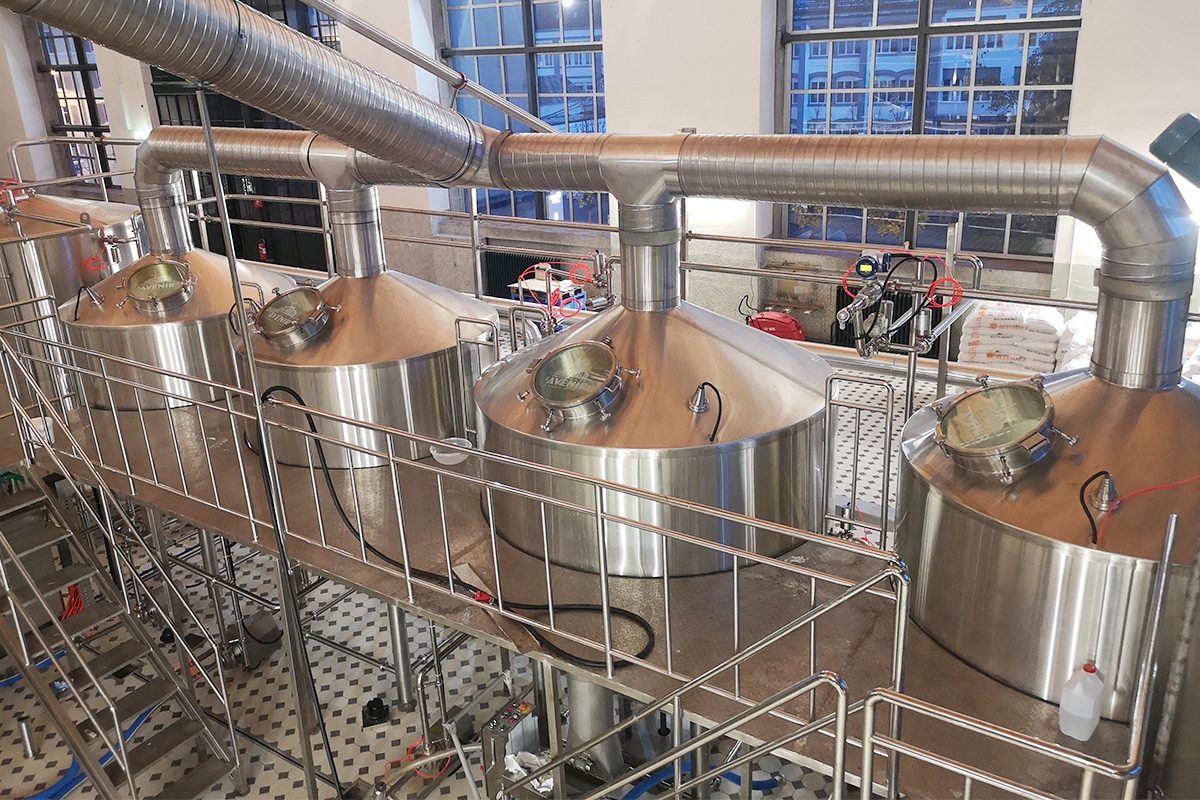
Choosing the Right Brewhouse Size: Comprehensive Guide
In the booming world of craft beer, the decision to embark on a brewing journey is an exciting one. However, a key question is often overlooked: What size brewhouse do I need? This survey is your gateway into the world of decisions that shape the foundation of your brewing business. From the intimate space of a nano brewery experimenting with innovative batches to the spacious facilities producing a variety of craft beers for a global audience, your choice of brewery size is a critical moment in your brewing journey. In this article, we’ll take a comprehensive look at how to guide brewers, whether new or experienced, toward the optimal brewhouse size to realize their brewing dreams. From understanding batch size to anticipated scalability, this exploration aims to uncover the quest for the ideal brewery and set the stage for a successful and fulfilling brewing journey.
Complete Guide
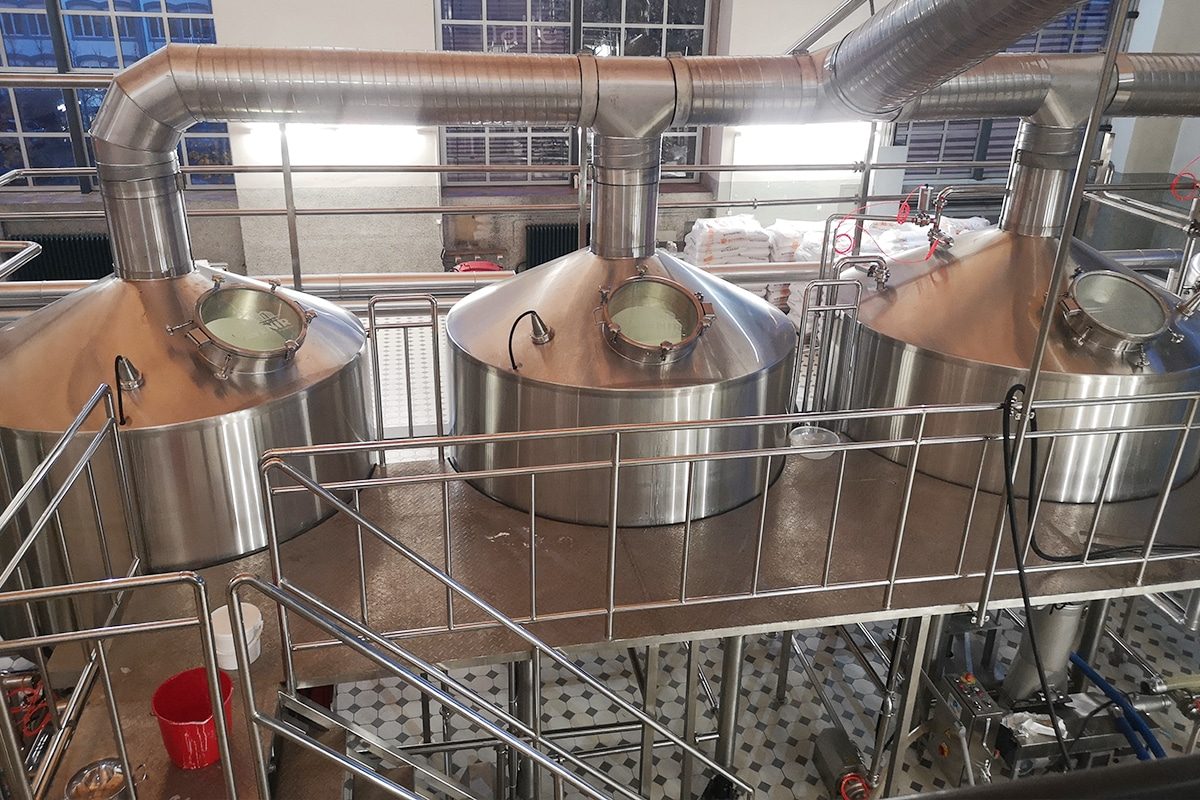
Factors Affecting Brewhouse Size
Production Goals and Scale
- Aligning Brewhouse Size with Brewing Identity: The scale of your brewing ambitions directly influences the choice of brewhouse size. If your vision encompasses a boutique brewery focusing on artisanal, limited-batch releases, a smaller brewhouse might be the ideal fit. In contrast, a brewery with aspirations of broader market penetration and consistent flagship offerings may lean towards a larger brewhouse to meet higher production demands.
- Flexibility for Diverse Production Goals: The diversity of your beer offerings plays a crucial role in determining brewhouse size. Smaller brewhouses are adept at facilitating experimentation with unique flavors and styles, allowing for a more diverse and innovative beer lineup. Conversely, larger brewhouses can efficiently handle the production demands of a core lineup, ensuring consistency and reliability for consumers.
- Meeting Market Demand: The size of your brewhouse should be in harmony with the market demand for your products. A smaller brewhouse might suffice for niche markets or hyper-local distribution, while larger brewhouses become imperative when catering to widespread regional or national audiences. Balancing brewery size with market demand can help meet consumer expectations.
- Labor Costs and Operational Logistics: The size of your brewhouse directly influences labor costs and operational logistics. Smaller brewhouses may require more frequent brewing cycles and hands-on attention, potentially increasing labor costs. Larger brewhouses, while capable of higher production volumes, demand careful planning to ensure operational efficiency and the proper allocation of human resources.
- Brand Consistency and Reputation Management: Consistency is vital for establishing and maintaining a strong brand reputation. Breweries focusing on brand consistency and producing flagship beers that define their identity might find larger brewhouses more suitable. Smaller brewhouses, on the other hand, lend themselves well to breweries valuing constant innovation and the ability to pivot rapidly in response to market trends.
- Market Differentiation and Innovation: Brewhouse size plays a crucial role in shaping a brewery’s identity. Smaller brewhouses allow for more experimentation and innovation, providing a platform for unique and specialty releases. Larger brewhouses, while potentially limiting the frequency of experimental batches, excel in producing tried-and-true favorites at scale, contributing to market differentiation through consistency.
Batch Size
- Fundamental Considerations of Batch Size: Batch size serves as a fundamental parameter influencing the entire brewing process, making it a pivotal factor in the decision-making process for selecting the appropriate brewhouse size. Understanding the subtle effects of batch size leads brewers to seek the perfect balance between production efficiency and brewing flexibility.
- Striking the Right Balance: Selecting an optimal batch size involves striking the right balance between efficiency and experimentation. Smaller brewhouses are well-suited for brewers who prioritize variety and creativity, enabling them to produce limited-edition releases and respond swiftly to evolving consumer tastes. Larger brewhouses, on the other hand, shine in maintaining the consistency and scale required for flagship beers.
- Flexibility in Brewing Styles: The diversity of beer styles a brewery aims to produce influences the choice of batch size. Different styles may demand specific brewing equipment and processes. Smaller batches cater to the production of a wide range of styles, allowing for experimentation with diverse ingredients and brewing techniques. Larger batches are better suited for more standardized production processes.
- Consumer Trends and Market Demands: Batch size decisions should be aligned with consumer trends and market demands. Smaller brewhouses provide the agility to adapt quickly to changing trends, producing small batches of trendy or seasonal beers. Larger brewhouses, while efficient for meeting consistent consumer demand, may face challenges in responding rapidly to evolving market preferences.
Space and Facility Constraints
- Maximizing Available Square Footage: The physical space within a brewery sets the stage for the size of the brewhouse. Before selecting a brewhouse size, brewers must meticulously assess the available square footage within their facility. Space constraints can influence not only the footprint of the brewhouse equipment but also the layout of ancillary operations such as fermentation, packaging, and storage.
- Strategic Layout for Operational Efficiency: Efficient use of space contributes to good brewery operations. The layout of the brewhouse, fermentation area, and packaging section should be strategically planned to minimize bottlenecks and facilitate smooth workflow. Careful consideration of space constraints ensures that the brewhouse operates at peak efficiency without compromising safety or ease of maintenance.
- Storage Capacity and Fermentation Area: The size of the brewhouse must align with storage and fermentation requirements. Larger brewhouses typically necessitate more extensive fermentation vessels and increased storage space for raw materials and finished products. Smaller brewhouses, while more space-efficient, demand judicious planning to optimize storage and fermentation within limited areas.
- Infrastructure and Utility Considerations: Assessing the adequacy of infrastructure is crucial. Larger brewhouses may require upgraded utilities such as water supply, electrical connections, and drainage systems. Smaller brewhouses might operate within existing infrastructure but should still ensure that facilities meet the operational needs of the brewing process.
- Shared Spaces and Collaborative Facilities: For breweries operating within tight spaces, exploring shared-use facilities or collaborative brewing spaces can be a viable solution. Shared spaces allow brewers to pool resources, share equipment, and collectively optimize space utilization. This approach enables smaller breweries to operate more cost-effectively.
- Innovative Space-Saving Solutions: Innovative space-saving solutions can mitigate the impact of spatial limitations. Vertical storage, compact equipment designs, and efficient utilization of overhead space are examples of strategies that help breweries maximize operational space without compromising functionality.
- Compliance with Local Zoning and Environmental Regulations: Local zoning laws might dictate the permissible types of operations within specific zones. Additionally, environmental regulations may impact brewery operations. Adhering to these regulations ensures that the brewhouse size complies with legal and environmental standards.
Operational Efficiency
- Optimizing Production Cycles: Operational efficiency is a cornerstone of successful brewing, and the size of your brewhouse plays a pivotal role in achieving optimal efficiency. Smaller brewhouses often necessitate more frequent brewing cycles to meet demand, potentially leading to increased labor costs, energy consumption, and operational complexity. Larger brewhouses, with their higher production capacities, can streamline production cycles, maximizing efficiency.
- Streamlining Brewing Schedules: Efficient brewhouse operations rely on streamlined brewing schedules. The size of the brewhouse influences how efficiently batches are produced, impacting the overall workflow. Smaller brewhouses might require meticulous planning to maintain a consistent brewing schedule, while larger brewhouses can often handle increased production volumes more seamlessly.
- Labor Allocation and Workflow Management: The size of the brewhouse directly influences labor allocation and workflow management. Smaller brewhouses may require a proportionally higher number of personnel per batch, as tasks such as mashing, lautering, and transferring beer between vessels might be more manual. Larger brewhouses allow for more automated processes, optimizing labor efficiency and reducing operational costs per unit of beer produced.
- Equipment Utilization and Maintenance: Efficient utilization of brewing equipment helps improve operational efficiency. Larger brewhouses, with their higher capacity vessels, might allow for more streamlined and automated processes. However, careful maintenance and adherence to cleaning schedules become increasingly vital to avoid downtime. Smaller brewhouses might require more hands-on attention but can be more forgiving in terms of maintenance complexity.
- Quality Control Measures: Maintaining consistent quality is a priority for breweries of all sizes. Larger brewhouses, with their potential for higher production volumes, must implement robust quality control measures to ensure that each batch meets the established standards. Smaller brewhouses might benefit from greater hands-on control, facilitating meticulous attention to detail and quality assurance.
- Lean Brewing Practices: Regardless of the size of your brewery, implementing lean brewing practices can help improve operational efficiency. Minimizing waste, optimizing resource utilization, and streamlining processes contribute to leaner operations. Larger brewhouses might benefit from these practices by maximizing economies of scale, while smaller brewhouses can focus on reducing waste in each batch.
- Innovation and Market Responsiveness: Operational efficiency should not compromise innovation. The size of the brewhouse should allow for experimentation with new ingredients, styles, and brewing techniques. Balancing efficiency with a culture of innovation ensures that the brewery remains responsive to market trends and consumer preferences.
Equipment Cost and Budget
- Initial Investment Considerations: The size of your brewhouse is intricately tied to the initial investment required. Larger brewhouses, with their higher production capacities, often entail a more substantial upfront cost. Consider your budget constraints and weigh them against the potential return on investment to determine a brewhouse size that aligns with your financial goals.
- Budget Allocation for Complete Setup: Developing a comprehensive budget is critical for brewery startups or expansions. Allocate funds not only for the brewhouse equipment itself but also for installation, utilities, facility modifications, and regulatory compliance. A thorough budgeting process ensures that your brewhouse size aligns with your financial capacity without compromising essential operational components.
- Operating Costs and Ongoing Expenses: Beyond the initial investment, assess the ongoing operating costs associated with different brewhouse sizes. Larger brewhouses might benefit from economies of scale, resulting in lower production costs per unit of beer. However, they might also incur higher utility costs, increased raw material consumption, and more extensive maintenance requirements. Evaluate the overall cost-effectiveness of your chosen brewhouse size.
- Return on Investment (ROI) Analysis: Conduct a detailed ROI analysis to determine the long-term financial viability of your brewery. Consider factors such as anticipated production volume, market demand, pricing strategy, and projected revenue streams. A thorough ROI analysis helps in making informed decisions about brewhouse size based on your financial objectives and growth projections.
- Long-Term Financial Viability: Ensure that your chosen brewhouse size contributes to the long-term financial viability of your brewery. Align the equipment cost with your budget constraints while also fostering growth and profitability. A sustainable financial plan supports the stability and growth of your brewery over time.
Flexibility and Expansion
- Anticipating Future Growth: Choosing the right brewhouse size involves more than meeting current production demands, it requires anticipating future growth. A flexible brewhouse size allows for seamless adaptation to increased production requirements, new market opportunities, and evolving consumer preferences. Consider your long-term business goals and select a brewhouse size that accommodates future growth without extensive overhauls.
- Modularity and Scalability: Modular brewhouse designs and scalable equipment options provide flexibility for future expansions. Opting for equipment that can be easily upgraded or expanded allows brewers to incrementally increase production capacity. This approach ensures that the brewhouse can grow alongside the brewery’s success, avoiding the need for a complete overhaul when scaling up.
- Incremental Expansion Strategies: Consider phased or incremental expansion strategies. Instead of investing in the largest brewhouse from the outset, start with a size that meets current needs and allows for gradual expansion. This approach minimizes initial investment costs and aligns with the principle of growing the brewery in response to proven demand and market stability.
- Future-Proofing Through Design: Designing the brewery layout with expansion in mind is crucial. Ensure that the infrastructure, utilities, and available space can accommodate the installation of additional equipment as the brewery grows. Future-proofing through design minimizes disruptions and expenses associated with facility modifications when increasing production capacity.
- Flexibility in Production Variety: The size of the brewhouse influences the variety of beers a brewery can produce. A flexible brewhouse allows for both consistency in flagship offerings and the ability to experiment with smaller batches of unique and seasonal brews. Balancing production efficiency with the flexibility to innovate ensures that the brewery can cater to diverse consumer preferences.
- Adaptability to Market Shifts: Market trends and consumer preferences can change rapidly. A flexible brewhouse size enables brewers to pivot quickly in response to market shifts. Whether it’s adjusting production volumes, introducing new styles, or accommodating custom orders, adaptability is a competitive advantage in the dynamic craft brewing landscape.
- Strategic Planning for Expansion: Craft a strategic expansion plan that aligns with your brewery’s growth trajectory. Regularly revisit and refine this plan based on market trends, consumer feedback, and operational insights. A well-thought-out expansion strategy ensures that the brewery can scale production efficiently and sustainably.
Energy and Resource Consumption
- Environmental Impact Assessment: Conducting a thorough environmental impact assessment is a critical step in determining the appropriate brewhouse size. Larger brewhouses generally have a higher energy and resource demand, contributing to a larger environmental footprint. Assessing the environmental impact allows brewers to make informed decisions that align with sustainability goals.
- Water Conservation and Recycling: Water usage is a significant consideration in brewing operations. Regardless of brewhouse size, implementing water conservation and recycling measures is crucial. Technologies such as recirculation systems, wastewater treatment, and rainwater harvesting contribute to sustainable water management practices, benefiting both the environment and operational costs.
- Waste Reduction Strategies: Minimizing waste generation is vital for sustainable brewing. Larger brewhouses may produce more waste, emphasizing the need for effective waste reduction strategies. Closed-loop systems, byproduct utilization, and partnerships with recycling programs are essential for managing waste responsibly and reducing the environmental impact of brewing operations.
- Sustainable Sourcing and Supply Chain: Consider the sustainability of raw materials and ingredients used in brewing. Sourcing locally or from suppliers with eco-friendly practices reduces the carbon footprint associated with transportation and supports sustainable agriculture. Evaluating the sustainability of the supply chain contributes to overall energy and resource efficiency, influencing the brewhouse size decision.
- Carbon Footprint Mitigation: Larger brewhouses often have a higher carbon footprint. Mitigating this impact requires strategic initiatives such as carbon offset programs, transitioning to renewable energy sources (e.g., solar or wind power), and investing in carbon-neutral initiatives. Smaller brewhouses inherently have a smaller carbon footprint, but both sizes can prioritize sustainability through proactive measures.
Regulatory Considerations
- Production Capacity Restrictions: Regulatory frameworks often stipulate production capacity limitations based on licensing and permit requirements. These restrictions directly influence the size of the brewhouse you can install. Compliance with production volume regulations might dictate starting with a smaller brewhouse size until higher production capacities are authorized.
- Zoning and Space Allocation: Local zoning laws and space requirements mandated by regulatory authorities influence the physical size of the brewery. Zoning ordinances might specify minimum distances from residential areas or require a certain amount of space for brewing operations. Adhering to these regulations might limit the size of the brewhouse based on available space.
- Licensing Costs and Financial Implications: Different licensing tiers or categories based on production volume can significantly impact licensing costs. Lower-tier licenses for smaller breweries might have lower fees compared to licenses allowing larger production volumes. These costs directly influence the financial feasibility of investing in a larger brewhouse.
- Compliance and Quality Standards: Regulatory compliance often involves meeting specific quality and production standards. Smaller brewhouses might afford greater control and adherence to stringent quality standards, which might be more challenging to maintain with larger-scale operations. Adapting processes to meet quality standards can influence brewhouse size decisions.
- Environmental Regulations and Sustainability Practices: Environmental regulations concerning waste management, water usage, and sustainability practices can impact brewhouse size. Larger brewhouses might have more stringent environmental compliance requirements, necessitating investments in sustainable technologies or waste management systems.
- Flexibility for Regulatory Changes: Anticipating potential changes in regulatory frameworks is crucial. Choosing a brewhouse size that allows for flexibility in adapting to evolving regulations ensures that the brewery can seamlessly comply with any updated standards without major operational disruptions.
- Legal and Compliance Expertise: Navigating complex regulatory landscapes requires legal expertise. Smaller breweries might benefit from simpler compliance procedures, whereas larger operations might require dedicated legal counsel to ensure adherence to diverse regulatory requirements.
- Scalability and Future Compliance: Considering scalability in compliance efforts is essential. Larger brewhouses often face more stringent regulatory scrutiny. Planning for future compliance measures while considering brewhouse size allows the brewery to grow sustainably while staying compliant with regulatory standards.
- Community Engagement and Regulatory Advocacy: Engaging with local regulatory bodies and actively participating in regulatory discussions can influence future regulations. Breweries advocating for sensible and supportive regulatory frameworks might positively impact the scope and size of future brewhouse operations.
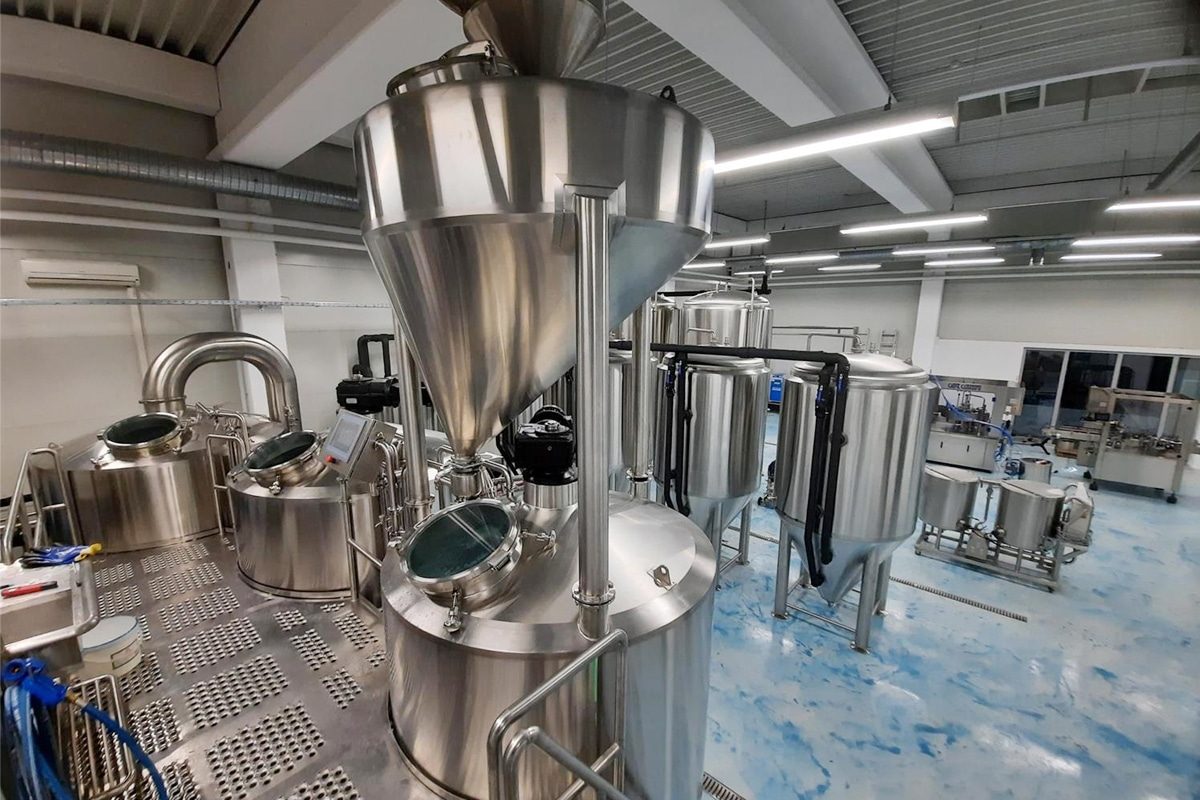
How to Choose The Right Brewhouse Size?
Choosing the right brewhouse size is a critical decision that requires consideration of various operational, logistical, regulatory, and growth-related factors. Brewhouse size will directly impact the success and efficiency of your brewery.
- Define your production goals: Start by clearly defining your production goals. Know how much beer you plan to produce per day, week, or year. Short-term and long-term growth projections also need to be considered to ensure the brewhouse size chosen is consistent with the brewery’s future expansion.
- Assess your size: Assess the size of your operation. Are you a small craft brewery focusing on unique and limited batches, or are you aiming to mass-produce a consistent flagship beer? When determining size, consider market needs and target audience preferences.
- Understand regulatory requirements: Research and understand the regulatory environment in your area. Different jurisdictions have different licensing, zoning, and production restrictions that may affect the size of a brewhouse.
- Consider space and facility constraints: Evaluate available physical space within the brewery. Consider the layout and workflow efficiency to ensure the brewhouse is sized appropriately for your facility. Assess any infrastructure or utility limitations and plan accordingly.
- Assess operational efficiency: Determine the level of automation and efficiency you are targeting in your brewing process. A larger brewhouse may allow for a more automated process, while a smaller brewhouse may require more manual operations.
- Determine batch size: Define the required size based on your production goals and market demand. Consider batch size flexibility to accommodate experimentation, seasonal brewing, and changing consumer preferences.
- Evaluate equipment costs and budget: Conduct a thorough cost analysis, including equipment, installation, utility, and compliance expenses. Adjust your budget based on brewhouse size to balance initial investment and long-term financial sustainability.
- Examining energy and resource consumption: Assessing the environmental impact of brewhouses of different sizes. Consider energy use, water consumption, waste generation, and how these align with your sustainability goals.
- Flexibility and scalability factors: Prioritize flexibility in brewhouse size to allow for future expansion or adjustments. Consider modular designs or scalable equipment options that allow for incremental growth without a major overhaul.
- Adapt to industry trends and innovations: Stay current on industry trends and technological innovations that impact brewhouse design. Consider emerging technologies and consumer preferences that may impact your brewery’s future operations.
- Seek professional advice: Consult with beer industry experts, equipment manufacturers, and other brewers who have made similar decisions to gain insight into best practices and industry standards. Consider hiring a consultant or brewhouse design expert to provide advice tailored to your specific needs.
- Test and iterate: If possible, start with a smaller brewhouse and test your production model. Use this experience to collect data, understand your market, and refine your brewhouse scale based on real-world feedback.
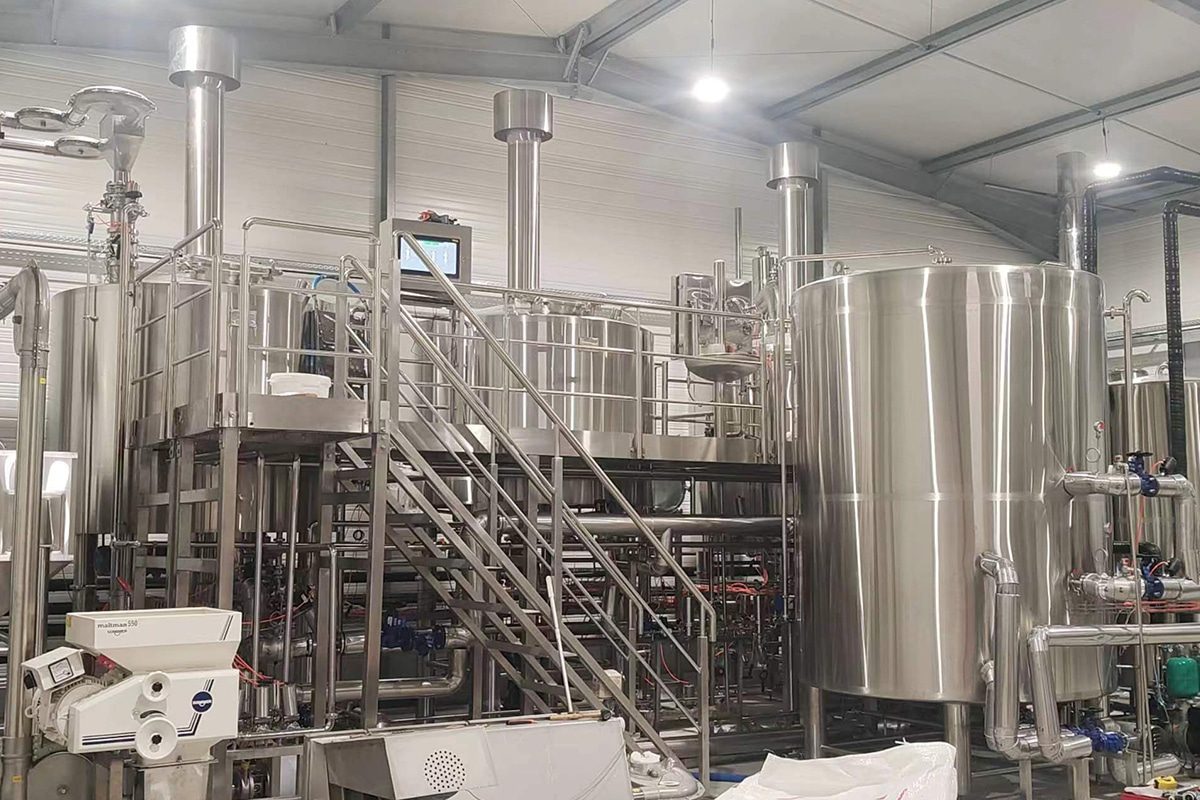
Summarize
In the complex world of brewing, choosing the ideal brewhouse size is like orchestrating a symphony, a blend of creativity, logistics, and strategic foresight. The culmination of this journey is a critical decision that determines the brewery’s capacity, identity, and growth potential. From the regulatory environment to alignment with production goals, finding the right brewhouse size is a multi-faceted quest.
Ultimately, it’s a delicate balance between a brewery’s current needs and future desires. Choosing a smaller, flexible brewhouse that fosters innovation or a larger, scalable brewhouse that meets consistent needs isn’t just about volume, it’s a reflection of the brewery’s ethos. As the industry evolves, it becomes critical to embrace sustainability, technological advancements, and market trends.
The journey to the perfect brewhouse size encapsulates the essence of brewing, a complex blend of science, art, and strategic decision-making. So whether it’s a small brewhouse pushing boundaries or a large brewhouse meeting market demands, this pursuit embodies the heart and soul of brewing itself, a relentless pursuit of excellence. Cheers to the unique harmony each brewery finds in its pursuit of the perfect brewhouse size.
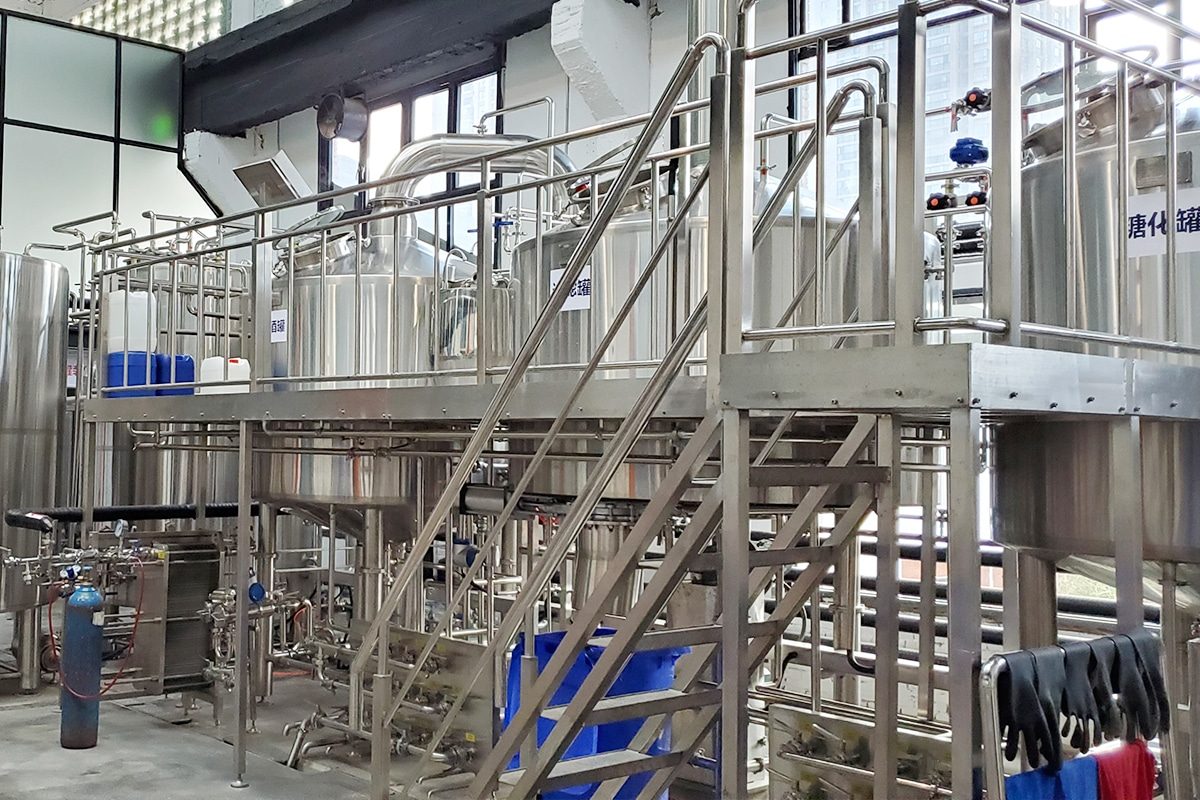
Get Brewhouse Solutions
To transform your brewing aspirations into reality, the first step is to obtain a tailored brewhouse solution that aligns with your unique needs. Our expert team is ready to guide you through this crucial decision-making process. Whether you envision a compact brewhouse for innovative small-batch brewing or a larger setup to meet growing demands, we’re here to assist.
To initiate the journey toward your ideal brewhouse, contact us today. Our seasoned professionals will conduct a comprehensive consultation, considering your production goals, facility constraints, and regulatory requirements. From there, we’ll craft a personalized brewhouse solution, providing you with the information needed to make informed decisions.
Obtaining a brewhouse solution with us goes beyond a transaction, it’s a collaborative venture to sculpt the perfect brewing infrastructure for your success. Reach out to us for a consultation and relevant quotations, and let’s embark on the path to brewing excellence together.



